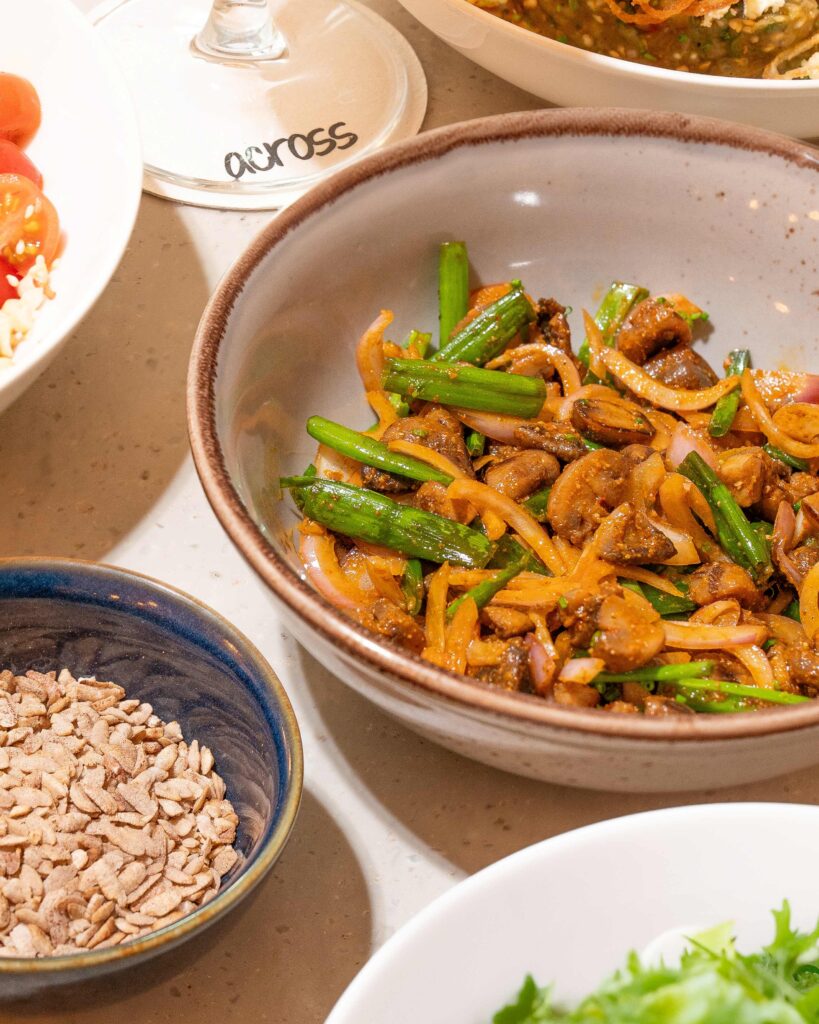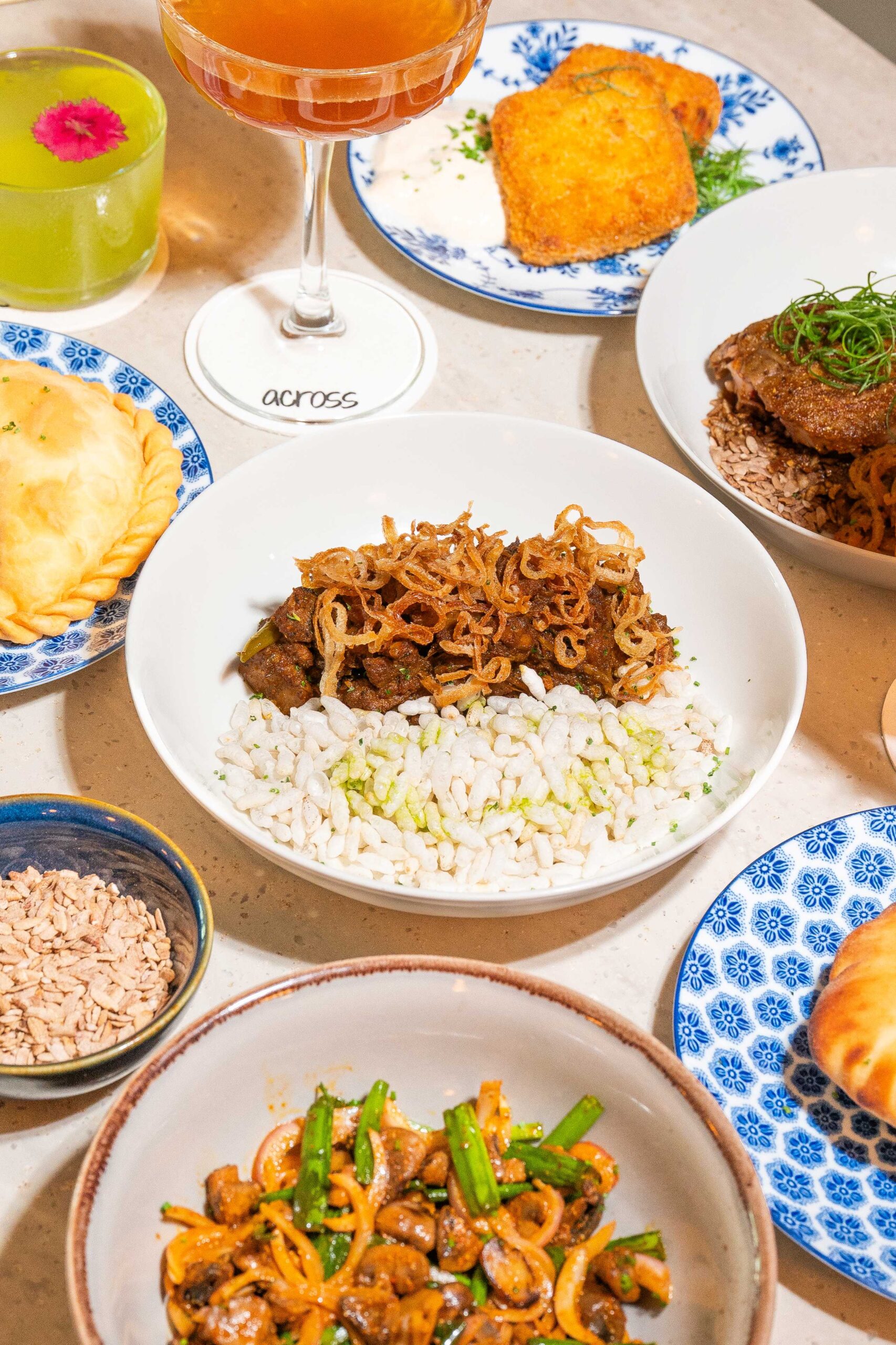The 2400 km expanse of the Himalayas, speckled with record-defying peaks and verdant valleys, is more than an imposing geographic feature of the Indian subcontinent. It is home to some of the unique flavours, foods and ingredients, creating a distinctive subculture in India’s culinary culture. The time is ripe to explore and understand the finer details of how the mountain’s bounty has given shape to what is loosely being described as ‘Himalayan cuisine’ by many.

Since the early 2000s, the humble momo with Tibetan and Nepalese roots has won over food lovers across India, becoming a gastronomic stereotype. “While momo is a delicious gateway dish, it often overshadows the region’s wider culinary traditions,” say Chef Viraf Patel and Prakriti Lama Patel, founders of Across, a Himalayan-inspired restaurant in Mumbai. Here, diversity shines—beans and legumes as staples, dried meats enriching curries and soups, dairy and cheeses filling in where meat is scarce, and foraged herbs, lichens, berries, and peppercorns adding depth. Dishes like Bhatt ki Churkani from Uttarakhand, Thukpa from Ladakh, and Gundruk from Nepal tell stories of altitude, endurance, and ancestral wisdom.

In Himachal Pradesh alone, the use of beans changes. “Rajma Madra is a Chamba speciality, Kabuli Chana replaces it in Kangra’s version—Safed Chane ka Madra—a change believed to have arrived with migrating brides,” shares home chef and Himachal food expert Sherry Mehra.
“Himalayan food is not a trend; it’s a living expression of the land, the climate, and the communities that have thrived there for centuries,” emphasises Bidyut Saha, Executive Chef, Taj Corbett Resort & Spa. A common misconception about the foods of the Himalayas, he shares, is that it’s plain or lacking complexity. It is quite the opposite with elements like jakhya seeds, timur pepper, and bhang chutney bringing a distinctive character that is deeply rooted in the region’s ecology and traditions.

Depending on how high up in altitude you are, access to fresh produce changes. While many Himalayan communities embrace plant-forward diets, others draw from their natural surroundings, incorporating yak meat, freshwater fish, and wild forest mushrooms. At the same time, the foods are not always meat-heavy: “An animal harvest is rare, often involving an entire village, and usually reserved for special festivals or occasions,” say the duo from Across.
Alongside Viraf and Prakriti Lama Patel, chefs like Prateek Sadhu and Doma Wang have helped bring Himalayan flavours into the spotlight. With Naar in Kasauli, Sadhu gives haute cuisine spins to dishes from Jammu, Kashmir, Himachal, and Uttarakhand, while Wang’s The Blue Poppy in Kolkata celebrates Tibetan cuisine. Meanwhile, Yangdup Lama and Minakshi Singh, with The Brook in Gurugram, add a Himalayan touch to cocktails and bar bites proving the region’s food and drink traditions are becoming a trend in their own right.
The challenge, however, like most regional Indian cuisines, is the oversimplification due to an all-encompassing term. While the umbrella term of ‘Himalayan’ does build awareness, it also flattens a vast and diverse landscape into a single, generic term. “Each region has its own language, ingredients, and techniques. You can’t club Kashmir, Ladakh, Himachal, and Uttarakhand under one umbrella without missing the nuances,” explains Mehra. The moniker fails to reflect the culinary depth of each region. There may be some overlap in ingredients—like millets, pulses, and wild greens—but the preparation methods and flavour profiles vary dramatically.

“When I started this journey almost 20 years ago, it was difficult to get people to even pronounce Dhaam, let alone understand it,” Mehra recalls. “But slowly, things are changing.” Today, dishes like Siddu and Dhaam are making appearances in urban restaurants and food festivals, a sign that Himachali cuisine is stepping out of the shadows. With its focus on sustainability, fermentation, and gut-friendly ingredients, it aligns beautifully with modern wellness trends. The path forward lies in holding on to traditional flavours and techniques while presenting them through a more global and contemporary lens. “This balance — between preservation and reinvention, memory and modernity—is what will define the future of Himalayan cuisine,” say the Patels.
Also Read:
Review: Karan Johar’s OJU in Gurugram is a superhit space
Review: Ikk Panjab brings culinary traditions and flavours from undivided Punjab at a new outlet in Delhi
A Journey to the Last Village of India








[…] Read:India Celebrates The Soulful Himalayan CuisineSweet Escapes: Must-Try Chocolate Desserts Across IndiaDining for the Planet: Inside India’s New […]
[…] Read:India Celebrates The Soulful Himalayan CuisineDining for the Planet: Inside India’s New Age of Sustainable LuxuryHow India Eats in […]